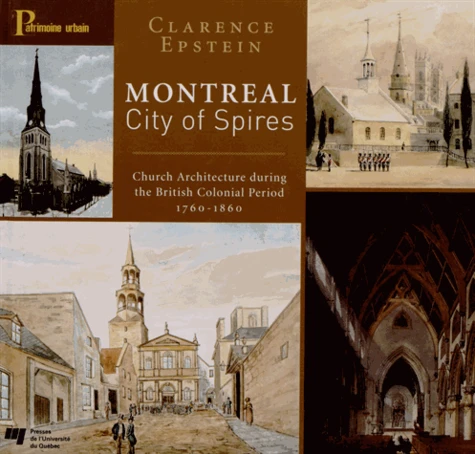Montréal City of Spires. Chruch Architecture during the British Colonial Period (1760 - 1860)
Par :Formats :
- Paiement en ligne :
- Livraison à domicile ou en point Mondial Relay indisponible
- Retrait Click and Collect en magasin gratuit
- Réservation en ligne avec paiement en magasin :
- Indisponible pour réserver et payer en magasin
- Nombre de pages272
- PrésentationRelié
- FormatGrand Format
- Poids1.218 kg
- Dimensions24,8 cm × 25,7 cm × 1,7 cm
- ISBN978-2-7605-3422-3
- EAN9782760534223
- Date de parution23/11/2012
- CollectionPatrimoine urbain
- ÉditeurPU Québec
Résumé
Of the fifty religious buildings discussed in this book, only a precious few remain standing despite the fact that Montreal boasts one of the largest and most eclectic groupings of Georgian and Victorian structures of any city in North America. Following the British conquest of New France in 1759 a remarkable series of transformations took place in the small, Catholic trading town of Montreal. Given the diversity of settlers forced to live side by side, the new church buildings that were to rise became strategic public spaces, meeting places as well as power bases.
It was no wonder that by the time Mark Twain toured Canada's first metropolis in the 1880s, he found that one could not throw a brick in the place without breaking a church window. By addressing the social, religious and architectural issues surrounding these colonial-era structures, it will become apparent that Montreal was at once a shining jewel in England's imperial crown, a chief outpost of Catholicism in the New World, as well as the British North American headquarters for more than a dozen independent congregations.
It was no wonder that by the time Mark Twain toured Canada's first metropolis in the 1880s, he found that one could not throw a brick in the place without breaking a church window. By addressing the social, religious and architectural issues surrounding these colonial-era structures, it will become apparent that Montreal was at once a shining jewel in England's imperial crown, a chief outpost of Catholicism in the New World, as well as the British North American headquarters for more than a dozen independent congregations.
Of the fifty religious buildings discussed in this book, only a precious few remain standing despite the fact that Montreal boasts one of the largest and most eclectic groupings of Georgian and Victorian structures of any city in North America. Following the British conquest of New France in 1759 a remarkable series of transformations took place in the small, Catholic trading town of Montreal. Given the diversity of settlers forced to live side by side, the new church buildings that were to rise became strategic public spaces, meeting places as well as power bases.
It was no wonder that by the time Mark Twain toured Canada's first metropolis in the 1880s, he found that one could not throw a brick in the place without breaking a church window. By addressing the social, religious and architectural issues surrounding these colonial-era structures, it will become apparent that Montreal was at once a shining jewel in England's imperial crown, a chief outpost of Catholicism in the New World, as well as the British North American headquarters for more than a dozen independent congregations.
It was no wonder that by the time Mark Twain toured Canada's first metropolis in the 1880s, he found that one could not throw a brick in the place without breaking a church window. By addressing the social, religious and architectural issues surrounding these colonial-era structures, it will become apparent that Montreal was at once a shining jewel in England's imperial crown, a chief outpost of Catholicism in the New World, as well as the British North American headquarters for more than a dozen independent congregations.


